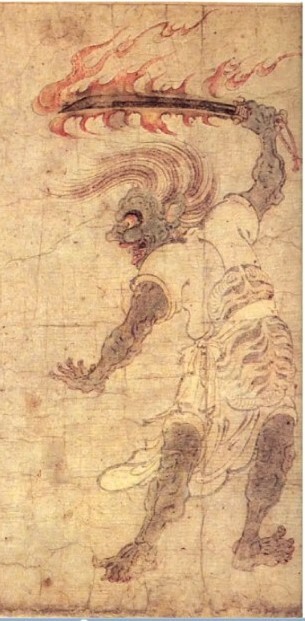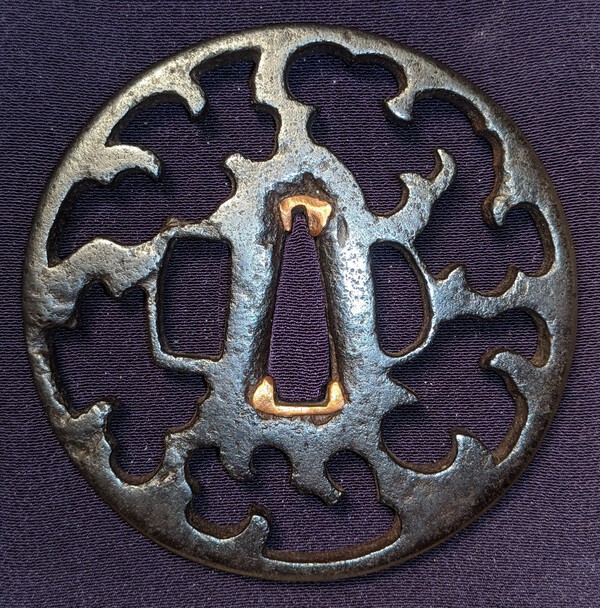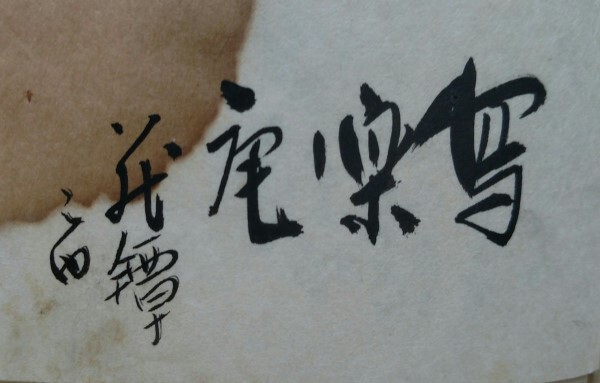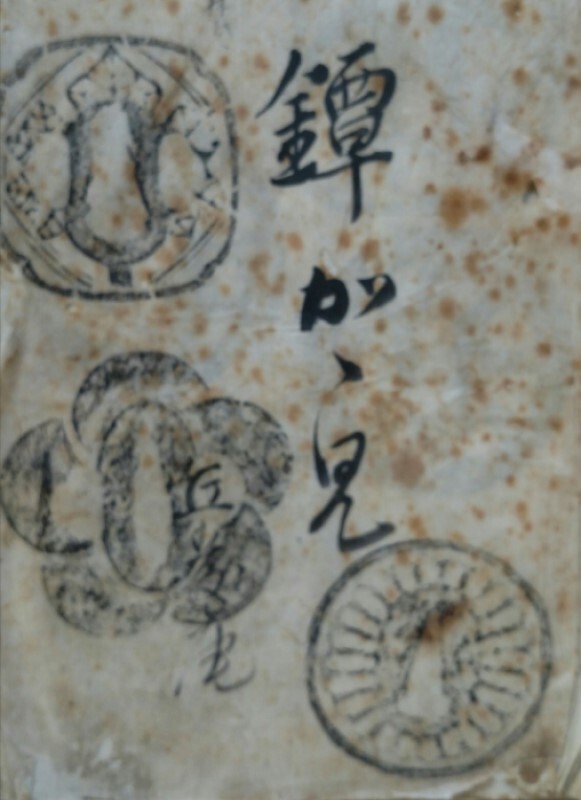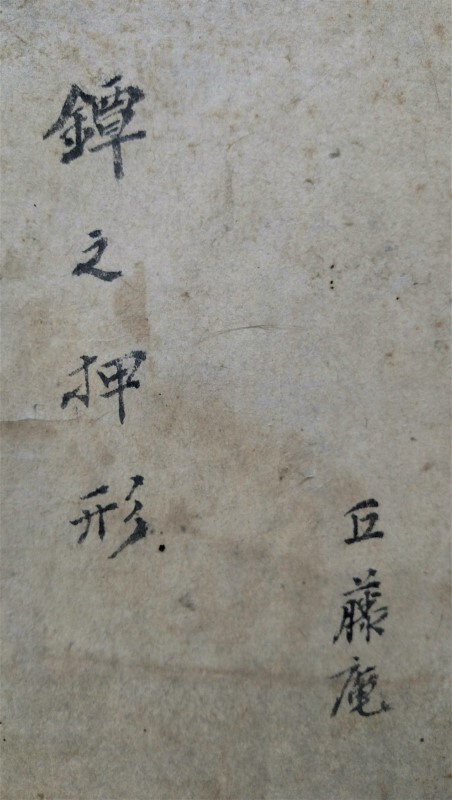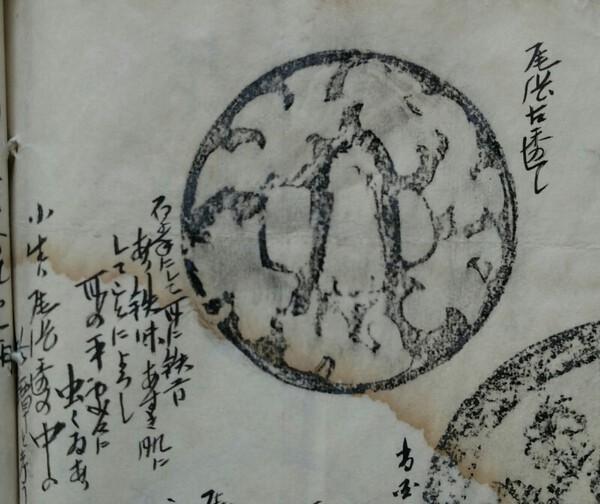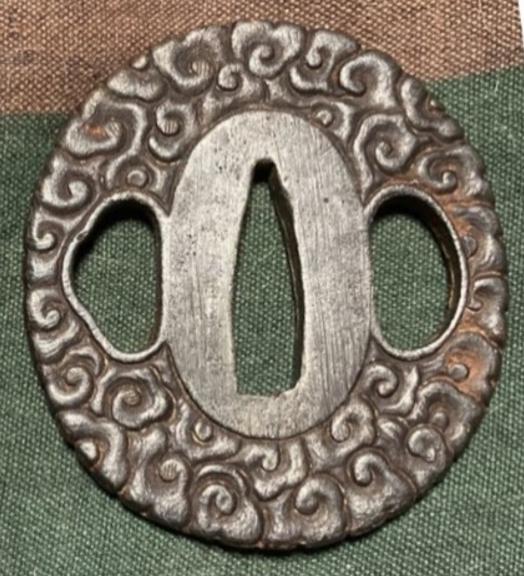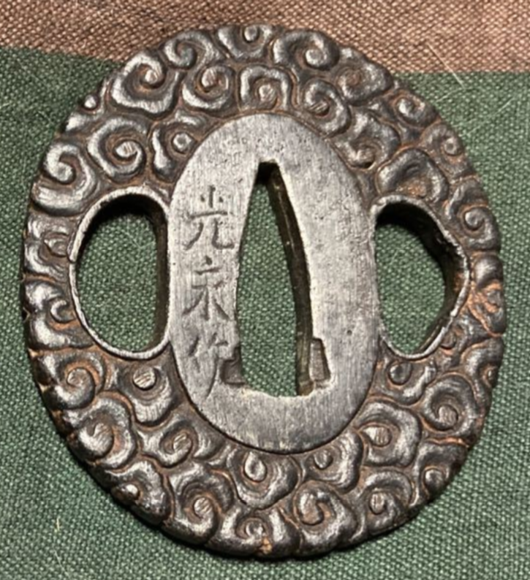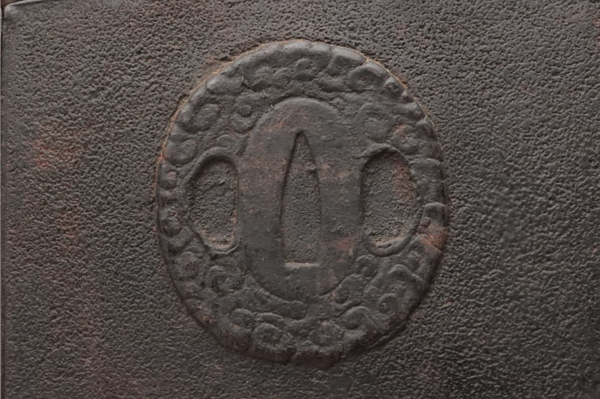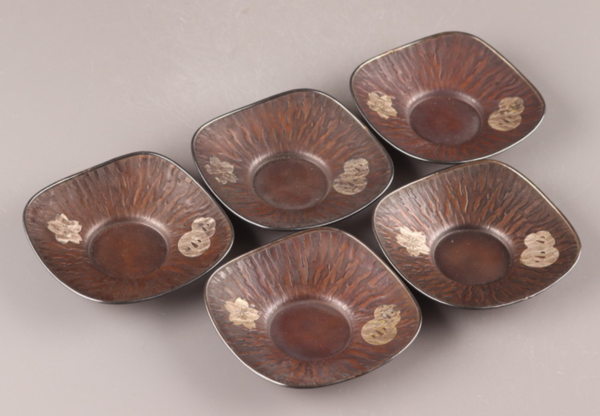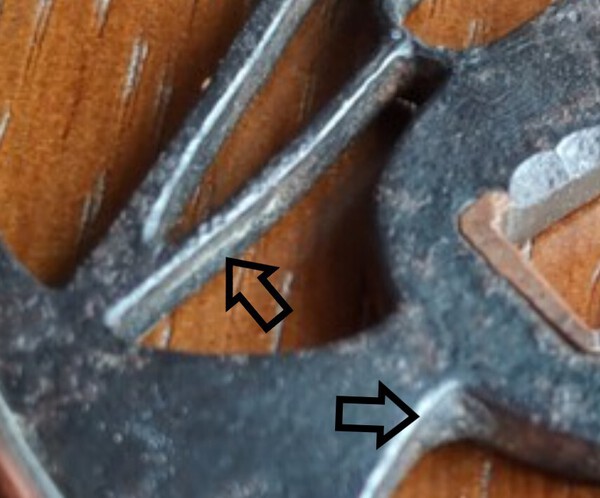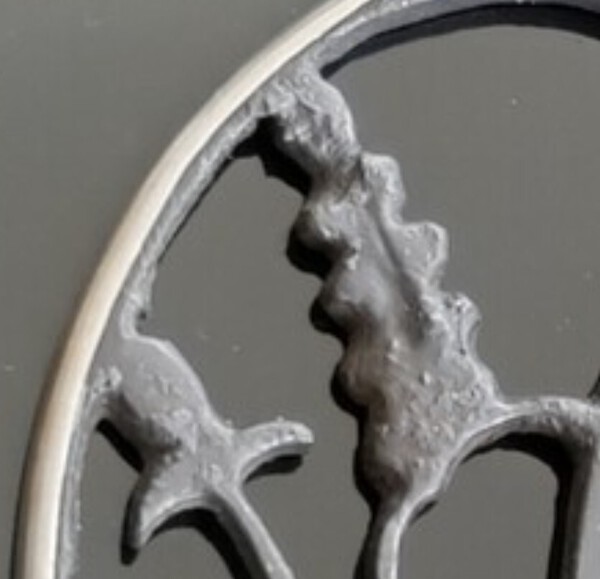-
Posts
721 -
Joined
-
Last visited
-
Days Won
13
Content Type
Profiles
Forums
Events
Store
Downloads
Gallery
Everything posted by GRC
-
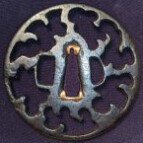
Tsuba Oshigata translation help requested - inkbrush script
GRC replied to GRC's topic in Translation Assistance
Here's a condensed explanation of the "Sharaku" passage by ChatGPT: The text "写楽尾張鐔之也" can be read as "Sharaku Owari tsuba no nari". "写楽" (Sharaku) refers to Toshusai Sharaku, a famous ukiyo-e artist who was active during the Edo period in Japan. "尾張鐔" (Owari tsuba) refers to a type of tsuba that was made in the Owari region of Japan. "之也" (no nari) is a phrase that can be translated as "also" or "as well". I looked up info about "Sharaku" on this site: UKIYO-E ARTISTS: SHARAKU, HOKUSAI, HIROSHIGE AND UTAGAWA | Facts and Details. He was theorized to be a member of a samurai clan, and produced "outsider art" for a very short period of time. His style of ukiyo-e broke many of the art conventions of the time. Here is one of his works: I wonder if the author's reference to this "outsider-artist's" name might allude to Owari-style tsuba made by smiths who may have been working independently from the main group of Owari smiths. Or, Owari tsuba that break from the norms and conventions of the typical Owari tsuba? This tsuba does have unusual seppa-dai and hitsu-ana shapes, to go along with the atypical sukashi design. This is pure conjecture on my part, but it makes for an interesting story I'm going to have to find out what the other tsuba look like in this section of the oshigata book to see if this hypothesis adds up, or if it's just fanciful conjecture on my part... -

Tsuba Oshigata translation help requested - inkbrush script
GRC replied to GRC's topic in Translation Assistance
Thank-you Steve! That's fantastic Providing the typed kanji is immensely helpful. I can use different translation apps to see what comes up The iron definitely has: -thick tekkotsu -a distinct deep, glossy, purply-graphite colour -the surface is also fairly smooth (one of translation apps mentioned a reference to "smoothness" in the kanji that Steve provided) I think the reference to the mimi could be correct... the entire mimi has a smooth but irregular surface with very long grooves and troughs formed by the tekkotsu. Perhaps these tunnel-like grooves and indents are what the "insect-eaten pattern in the ears/mimi" is referring to? Regarding the sukashi pattern itself: There are some clear overlapping circles in the sukashi cutouts, so I could also see that applying to a more standard "insect eaten pattern", as Steve suggested. But then... why does the author specifically refer to the "mimi"/"ears" if they were trying to describe the sukashi? Just throwing some thoughts out there for potential discussion I'll find out about the kagami... ,and look into the "Sharaku" reference some more... Thanks again SteveM! -

Tsuba Oshigata translation help requested - inkbrush script
GRC replied to GRC's topic in Translation Assistance
Thanks Jean, The owner of the oshigata thought "Owari" was in there too, so I had already put that in the name of the image files Brian, waves are a possibility. However the typical tsuba wave motif has more of a curl and a rounded "bulb" at the tip of each wave. I know of some later Ukiyoe woodblock prints that have waves with pointed tips, but you don't see that in the waves of sukashi tsuba (or at least I can't remember seeing any specific examples). I suspect the motif on this one is probably intended to be flames, with one set of flames moving inward from the mimi, and another set moving outward from the seppa-dai. Here's some flames from a Japanese depiction of a demon with a flaming sword: Flames from a dragon's mouth, or flames around the sacred "tama" jewel are common motifs, but an entire tsuba of just flames is really rare. Regardless of whether these are flames or waves, the tsubako and/or patron who commissioned it was definitely not conforming to the "expected" and was probably trying to make a statement with this one. It grabbed my attention the second I saw it, and it's one of my favorites. I'm hoping someone will eventually come through with a translation of all the script... keeping my fingers crossed Maybe I should say, I'll keep a candle "burning" in anticipation? -

Tsuba Oshigata translation help requested - inkbrush script
GRC replied to GRC's topic in Translation Assistance
That's an interesting observation John. Unfortunately, I just have images of the oshigata so I can't say one way or the other... sorry -
Congrats Looking forward to what comes next
-
And another Nanban variant:
-
A really interesting variation on the motif, in soft metal, done by Sai Juji Ishikawa. Equivalent to the Mona Lisa?... this shachi is always watching you
-
Sorry Dale, but I have to add this info about the mei on the underside of the lid: You probably couldn't tell from the seller's images I posted, but the lids on these kettles are typically made of copper, so it would be very easy to carve into.
-
At the very least, it would give us a date range for that specific "type" of cast tsuba... Edo, Meiji, or both, it is what it is. There's a ton of this "type" of tsuba, with a bunch of different motifs, but they all share the same easily identifiable characteristics. So, it wouldn't be difficult to make the leap and assume with a fair degree of confidence that all the ones of this "type" would have been produced by this, or similar groups of kettle makers.
-
Funny Brian... ,and here it is without the kettle... The one on the kettle has the identical pattern to the ura side of these cast tsuba: Here's the omote side:
-
-
-
Nice one Vitaly blossoms for sure, snowflakes have a different look compared to those sukashi. Here's a little sample of the range snowflakes can take (from simplest to most complex): and the radial Amida yasuri rays were done by lots of schools (this one is certainly not by Yamakichibei though). Vitaly, I suspect your tsuba would likely get "binned" in with the Tosho or Katchushi as you suggested with your "early Edo armorer" attribution. Love the decorative sekigane "plugs" in the hitsu-ana.
-
yup that was a nice one... sad I missed it
-
well that settles that then Thanks Steve.
-
Hi Andrew, The gold nunome work is definitely done by "Hizen"... the dragon chasing the sacred "tama" jewel, as well as the silver nunome scroll-work "karakusa pattern" on the seppa-dai (that is mostly rubbed off now). And that chiseled X shape formed by what looks like a crossed ribbon is a "kamon" or family crest. Someone posted the same kamon from a print source earlier this year I think... can't remember the thread or who identified it though... it may have been @Bugyotsuji (Piers)? The plate shape and thickness looks more like a Shoami piece though... Aizu Shoami made this shape the most. I can't say that I've seen any Hizen work on this shape tsuba before... or at least it's not triggering any memories of specific examples I guess those Egyptians were getting creative! All in all, it's definitely not your typical combination of features. It's possible that someone back in the day, had a Shoami tsuba and sent it off to be "dressed up" by some nunome workers from Hizen... maybe just keeping up with changing fashions and trends?
-
Perhaps this one is from the same producer? Cast, plus fukurin. Also, I noticed, the guy's head fell off (bottom left, just under the hitsu-ana).
-
@Spartancrest, good question, And @Bugyotsuji, nice bit of research to fill us in with The whole topic of "what arrived when, and how" in Japan is very interesting, especially given their early exposure to Westerners in the mid-1500s, followed by the long period of isolationism of the Edo period (other than the few Portuguese trade-ships that were allowed to port each year, and their trade with China and the Mainland).
-
If it is a painter's name, then it's possible that the tsubako was re-creating one of the painter's works and credited "Tessai" by putting his name on the tsuba. I recently posted some info about the Jakushi school (totally unrelated to this tsuba) who did that (at least once) with their "bamboo blown in the wind" themed tsuba. So, it shows that "citing a painter's work" has been done before on tsuba. Just food for thought...
-
I think Piers has it right... looks like Japanese "shibazakura" or "moss Phlox" to me too: A travel site had this to say about a shiba-zakura festival: "There are multiple spots in Japan that are famous for moss phlox but we, the editing team recommends Fuji Motosuko Resort (Fuji kawaguchi-ko town, Yamanashi prefecture). Here, you can admire Mt. Fuji and moss phlox that spread wide like a carpet at the same time. In the park, an event known as “Fuji Shibazakura Festival ” is held when moss phlox are in peak. This year in 2017, the event will be held between April 15th and May 28th."
-
Hi Jean, I have to point out that there's still no evidence to support that... or at least none has been presented to date on this forum. Which experts have made that conclusion and what evidence was that based upon? Mass production of Shi-iremono was in full swing by the mid-1700s, so mass production was originally intended for the Japanese market. Also note: I'm not at all implying that this particular tsuba was made then, nor am I passing judgement on who it was made for. I'm merely commenting on that above statement that came across as a "statement of fact" rather than the opinion expressed by some or other author at some point... who still seems to be unnamed.
-
Hi Vitaly, I'm leaning toward cast copy (99% certain)... but sometimes images can give the wrong impression though. I'm guessing the fukurin was probably added to: 1- dress it up a little and make it look more "fancy", and... 2- maybe hide some casting flaws on the outside of the mimi (because the inside of the mimi also looks pretty messy in one area... so maybe there are more flaws elsewhere) In the zoomed-in image below, it looks like there's a clear mid-line seam along the thin sukashi, and the "inside corner" of the sukashi at the bottom right looks too "globby", rough and irregular to have been done by a chisel. There are other areas that show a hint of a mid-line seam but they are darker and less focused. ...and this part is too messy... looks like all of it is best explained by casting flaws (rather than corrosion of some kind). All the "bevels" along the majority of the sukashi edges also makes me think this was cast. ... and of course, this is all just my opinion.
-
soft metal copy of one of the Kinai ones:
-
I anticipate a bidding war...



